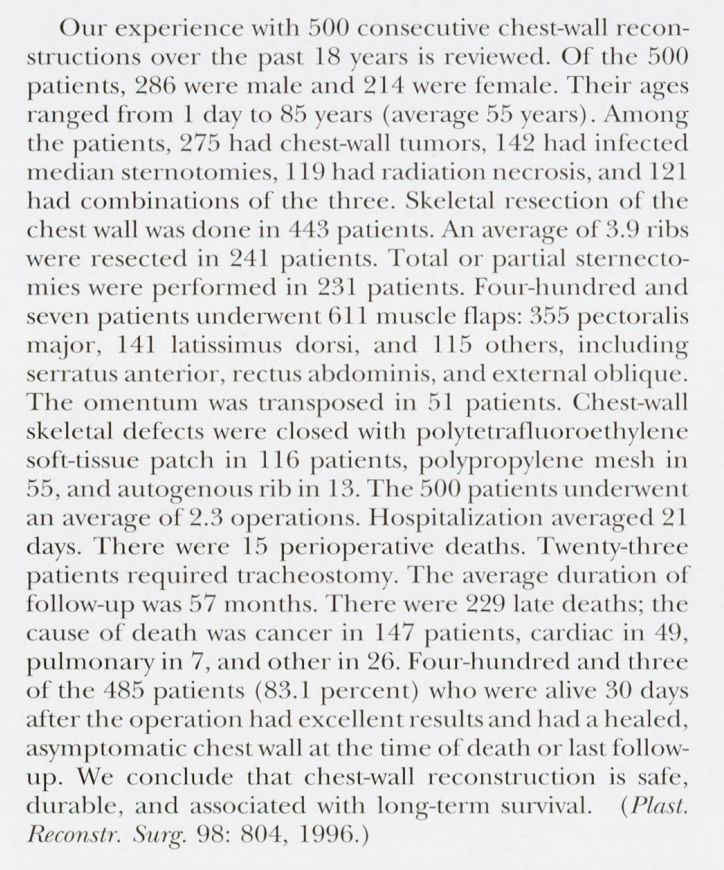Authors: Phillip G Arnold, Peter C Pairolero, General Thoracic Surgery at the Mayo Clinic, Minnesota, USA
Publication: October 1996.
Free Article: Read here.
5 Sentence Summary
- Case series of 500 chest wall reconstructions over an 18 year period.
- Commonly used flaps included pec major, LD, serratus anterior.
- Skeletal Defects reconstructed with patches, mesh, and autogenous rib.
- Common indications for surgery were tumors, infection, radiation necrosis.
- Chest-wall reconstruction is safe, reproducible & "good" long-term outcomes.
Here is the Abstract:

Authors Thoughts on Flaps
The authors advocate the most important thing is to have good knowledge of potential options, but also have a fall-back flap! Also, be careful of radiotherapy!! and smokers!!
Pectoralis Major
- Most frequently used
- Good for anterior chest wall (esp upper chest!)
- Can remain innervated and functional.
- Prefer supply by thoracoacromial muscle, as IMA supply could be compromised if further secondary cartilage resection could kill the flap.
Latissimus Dorsi
- Good for anterior and anterolateral chest wounds and also back defects.
- Incredibly reliable, a "workhorse".
- Can be used with the Serratus Anterior to give more tissue coverage.
Rectus Abdominis Muscle
- Anterior chest wall
- Dynamic in that skin can be orientated vertically or horizontally
- Less muscle than other flaps and superiorly-based blood supply is less robust
External Oblique
- Used only up to the level of the IMF
Greater Omentum
- A security blanket of the chest wall and can be your best friend.
- Readily accepts and supports bone and skin grafts
- Not good for full-thickness defects (obviously!)
P'Fella's Thoughts on the Article
- A seminal paper that really shaped the next generation of chest wall reconstructions.
- Stood the test of time and supported in more modern literature. For example, this 25-year case series concludes similar findings.
- An insight into how the medical practice has developed. The paper reports a relatively high mortality rate (for current standards), which just shows how we have progressed in a multi-disciplinary manner.


